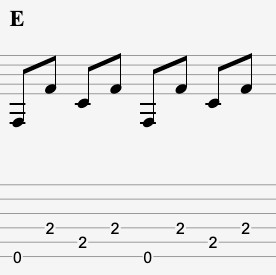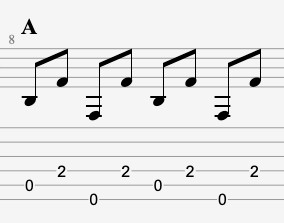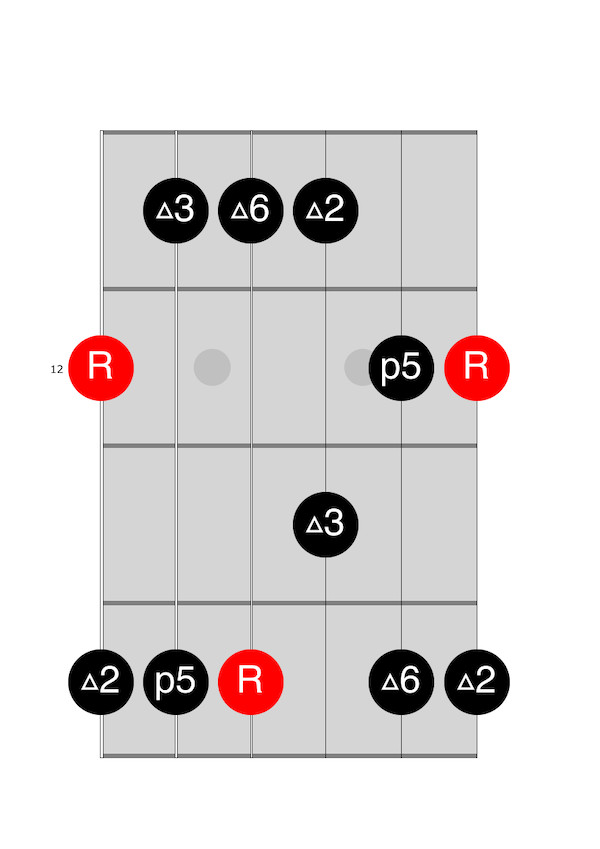“blues”
“Folsom Prison Blues” by Johnny Cash is an iconic track for any aspiring guitar player to learn. Not only is it a cornerstone of country and blues music, but it’s also a fantastic introduction to the 12-bar blues progression. This lesson will break down how to play “Folsom Prison Blues” on guitar, covering everything from the essential chords to the famous “boom-chick” strumming pattern and even some lead guitar techniques.
Whether you’re just starting out or looking to expand your blues repertoire, learning this song will improve both your rhythm and lead guitar skills. We’ll be using chord diagrams and explanations to get you playing along in no time. Let’s dive in and unlock the secrets of “Folsom Prison Blues”!
Who Wrote Folsom Prison Blues? The Man in Black’s Anthem
“Folsom Prison Blues” is one of the signature songs of the legendary Johnny Cash, often known as “The Man in Black.” He penned and originally recorded this classic country and blues tune, releasing it back in 1955. It quickly became one of his most recognizable and enduring songs throughout his illustrious career.
The song’s lyrics paint a vivid picture of a prisoner filled with regret, longing for freedom, and reflecting on his past actions. Cash’s inspiration for the song came from a combination of experiences, including seeing the film Inside the Walls of Folsom Prison and his own performances at various prisons. Drawing from traditional folk melodies and his unique storytelling ability, Cash crafted a song that captures the somber atmosphere of prison life, resonating deeply with listeners worldwide through its themes of regret, hope, and redemption.
In a career-defining moment in 1968, Johnny Cash performed “Folsom Prison Blues” live inside Folsom State Prison in California. This electrifying performance was recorded and released as part of the album “Johnny Cash at Folsom Prison,” further cementing the song’s legendary status and impact.
Essential Folsom Prison Blues Chords: E, A, and B7
To get started with “Folsom Prison Blues,” you’ll only need to learn three fundamental guitar chords: E major, A major, and B7. These are open position chords, making them relatively easy to grasp, especially for beginner guitarists.
Let’s look at each chord individually:
E Major Chord:
The E major chord is a foundational chord in guitar playing. It’s played across all six strings and has a bright, resonant sound. Here’s how to play it:
For the E major chord, strum all six strings.
A Major Chord:
The A major chord is another essential open chord. For “Folsom Prison Blues,” we’ll focus on a common voicing played on the top five strings:
For the A major chord, strum from the 5th string downwards.
B7 Chord:
The B7 chord adds a bluesy, dominant flavor to the progression. We’ll use an open voicing that focuses on the top five strings:
For the B7 chord, strum from the 5th string downwards.
These three chords – E, A, and B7 – are crucial in the key of E major. In music theory, they are known as the I (tonic), IV (subdominant), and V (dominant 7th) chords respectively. Understanding their roles helps in grasping the structure of countless songs, especially in blues and country.
- E (I chord): The root chord, providing a sense of resolution and home base.
- A (IV chord): Creates a move away from the tonic, adding harmonic interest and a slight tension.
- B7 (V chord): A dominant chord that strongly pulls back to the tonic E, creating a satisfying resolution.
Now that you’ve got these chord shapes under your fingers, let’s put them together into the song’s progression.
The 12-Bar Blues Progression in Folsom Prison Blues
“Folsom Prison Blues” is built upon the famous 12-bar blues progression, a fundamental structure in blues music and many related genres. Mastering this progression is key to understanding a vast library of songs.
Here’s the 12-bar blues progression as used in “Folsom Prison Blues,” using our E, A, and B7 chords:
| Bar | 1 | 2 | 3 | 4 | 5 | 6 | 7 | 8 | 9 | 10 | 11 | 12 |
|---|---|---|---|---|---|---|---|---|---|---|---|---|
| Chord | E | E | E | E | A | A | E | E | B7 | B7 | E | E |
Each row represents one bar of music. In 4/4 time (common time), each bar gets four beats.
Start by practicing this progression slowly. Strum each chord once per bar, holding it for the duration of the bar (four beats). Focus on smooth transitions between chords. Count “1-2-3-4” for each bar to keep time.
This simple practice will help you internalize the chord changes and the overall structure of the 12-bar blues.
Mastering the Boom-Chick Strumming Pattern
While strumming the chords is a start, the signature guitar sound of “Folsom Prison Blues” comes from Luther Perkins’ distinctive “boom-chick” rhythm. Luther Perkins was Johnny Cash’s original guitarist, and his minimalist, percussive style is instantly recognizable. This technique relies heavily on palm muting and an alternating bass note pattern.
Palm Muting:
Palm muting involves resting the edge of your strumming hand’s palm lightly on the strings near the bridge of your guitar. This dampens the string vibrations, creating a muted, percussive tone that is crucial for the “boom-chick” sound. Experiment with the pressure of your palm to find the right amount of muting – you want a percussive thump, not a completely deadened sound.
Alternating Bass Pattern:
The “boom-chick” rhythm uses an alternating bass note pattern played with the thumb, while the “chick” sound is created by strumming muted chords on the off-beats.
For the E chord, the bass pattern is often played on the 6th, 4th, and 5th strings. A common sequence is string 6, string 4, string 5, and then string 4 again (6-4-5-4).
 E chord boom-chick strumming pattern for Folsom Prison Blues guitar tab
E chord boom-chick strumming pattern for Folsom Prison Blues guitar tab
For the A chord, the bass pattern shifts to emphasize the root of the A chord. A typical pattern is string 5, string 4, string 6, and then string 4 again (5-4-6-4).
 A chord boom-chick strumming pattern for Folsom Prison Blues guitar tab
A chord boom-chick strumming pattern for Folsom Prison Blues guitar tab
For the B7 chord, you can use the same 5-4-6-4 pattern as the A chord, but with a slight adjustment to ensure the bass notes fit the B7 chord. On beats 2 and 4 of the strumming pattern, shift your middle finger from the 2nd fret of the 5th string to the 2nd fret of the 6th string. This ensures you’re hitting bass notes within the B7 chord as you alternate.
Practicing these patterns slowly and deliberately is key. Focus on getting the alternating bass and the muted “chick” strum in sync. It takes time to get the feel of the boom-chick rhythm, so be patient and persistent.
Guitar Soloing in Folsom Prison Blues: Scales and Techniques
Ready to try some lead guitar over “Folsom Prison Blues”? Two excellent scales to start with for soloing are the E major pentatonic scale and the E minor blues scale. These scales work beautifully over the E blues progression and provide a great foundation for improvising in a blues style.
1. E Major Pentatonic Scale:
The E major pentatonic scale has a bright, major key sound that fits well with the upbeat feel of parts of “Folsom Prison Blues.” Here’s a common position for the E major pentatonic scale starting at the 12th fret:
 E major pentatonic scale 12th position diagram for Folsom Prison Blues guitar tab
E major pentatonic scale 12th position diagram for Folsom Prison Blues guitar tab
2. E Minor Blues Scale:
The E minor blues scale adds a bluesier, more melancholic flavor. It incorporates the “blue note,” which gives it that classic blues sound. Here’s the E minor blues scale in the same 12th fret position:
Soloing Techniques to Try:
-
Repetitive Figures (Riffs): Create short, catchy melodic phrases and repeat them with slight variations. This is a common technique in blues and country solos that can make your playing memorable.
-
Bluesy Strumming: Incorporate strumming into your solos. Instead of just playing single notes, strum chords rhythmically to add texture and dynamics.
-
Melody Fragments: Weave in recognizable parts of the “Folsom Prison Blues” melody into your solo. This creates a strong connection to the song and makes your solo feel more integrated.
Here’s an example of a lick that incorporates some of these ideas:
 Folsom Prison Blues guitar lick example in tab format
Folsom Prison Blues guitar lick example in tab format
Experiment with these scales and techniques over the 12-bar blues progression. Start simple, focusing on playing notes that sound good to your ear. Gradually, you’ll develop your own blues soloing style.
Conclusion: Keep Jamming “Folsom Prison Blues”
“Folsom Prison Blues” is more than just a song; it’s a piece of music history and a fantastic vehicle for learning guitar. Johnny Cash’s storytelling combined with Luther Perkins’ unique guitar style has made this song a timeless classic.
As you continue to work on “Folsom Prison Blues,” remember to solidify your grasp of the E, A, and B7 chords and the 12-bar blues progression. Mastering the boom-chick rhythm takes practice, so start slowly and gradually increase your speed and accuracy.
With dedication and practice, you’ll be playing “Folsom Prison Blues” with confidence and style. Happy playing, and be sure to explore more blues guitar lessons to further your musical journey! For your next step, check out this blog post on “101 best blues songs to learn on guitar” to expand your repertoire!

